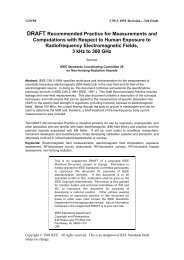An introduction to the quark model
An introduction to the quark model
An introduction to the quark model
You also want an ePaper? Increase the reach of your titles
YUMPU automatically turns print PDFs into web optimized ePapers that Google loves.
Few-charge systems His<strong>to</strong>ry of <strong>the</strong> <strong>quark</strong> <strong>model</strong> Mesons Baryons Multi<strong>quark</strong>s and o<strong>the</strong>r exotics Outlook<br />
The origin of spin dependent forces<br />
Much discussed at <strong>the</strong> beginning of charmonium<br />
Then discussed by Lattice QCD (Rebbi et al., etc.)<br />
<strong>An</strong>d o<strong>the</strong>r non perturbative methods (Brambilla et al.)<br />
Early approaches inspired by<br />
QED<br />
One-boson-exchange picture of nuclear forces<br />
Scalar exchange → central, and spin-orbit,<br />
Vec<strong>to</strong>r exchange → central, spin-spin, tensor and spin-orbit<br />
Early <strong>model</strong>s: vec<strong>to</strong>r linked <strong>to</strong> 1/r and scalar linked <strong>to</strong><br />
confinement,<br />
One should be careful: some terms come from <strong>the</strong> reduction of<br />
Dirac opera<strong>to</strong>rs in terms of Pauli spinors, o<strong>the</strong>r come from <strong>the</strong><br />
non-relativistic reduction (Thomas precession)<br />
It <strong>to</strong>ok some time <strong>to</strong> get a consistent picture compatible with<br />
Lorentz invariance (Gromes, Eichten-Sucher, etc.)<br />
JMR Quark Model

















